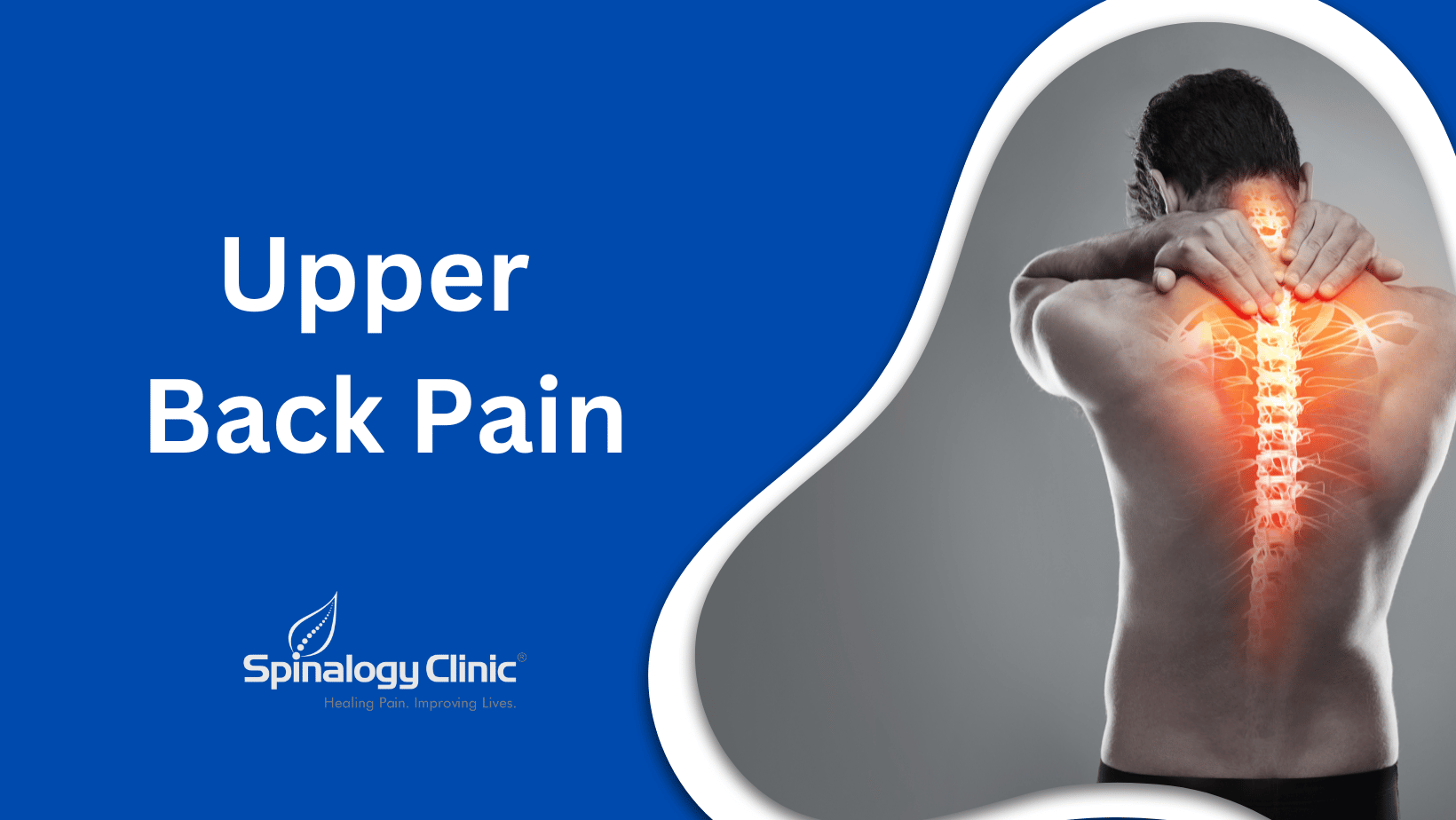Upper Back Pain
There can be many underlying reasons for upper back pain although it is mostly resistant to injury compared to other parts of the back. The pain is usually experienced after a traumatic affliction to the upper back but sometimes it can also appear out of the blue, with no apparent reason. Poor posture, repetitive movements of the upper body, heavy lifting, and overuse, in general, are some of the common and less serious causes. The pain in these cases might go away on its own, but it can also be recurrent and might worsen with time, depending on the cause and extent of the damage. Accidents such as falling or car crashes can cause severe damage to the upper back and medical aid is required in such situations.
The thoracic spine is composed of 12 bones and is referred to as T1, T2, and so on. The nerve roots of this bones radiate into different areas of the body and irritation in any of the nerves can cause pain.
Symptoms
Pain is usually experienced in just one place and is very excruciating. It might start suddenly or after a few hours’ post-injury. It can be especially problematic during the day as most physical activities are performed at that time.
Stiffness in the upper back area, as well as arms and shoulders, is another symptom. A tingling or numbing sensation is also felt which radiates from the upper back to the chest, arms, and even the legs. When the nerve endings of T1 and T2 become inflamed due to compression, pain radiates into the arms. T3, T4, and T5 are responsible for helping in breathing and any irritation of their nerve roots can cause pain in the chest and abdomen.
Weakness, numbness, and problem with marinating balance of the body are some of the serious symptoms.
Diagnosis:
Your physician will look into your medical history in case of a sudden onset of pain. However, the medical record is important even when an injury has supposedly prompted the pain. Your lifestyle also plays a major role in the diagnosis. People who are into adventure sports are more prone to accidents and the nature of the accident can help the physician in determining the type of injury.
Tests such as X-Ray, MRI, or a bone mineral density exam are also performed to rule out other causes of the pain. Sometimes, the pain can be due to arthritis, osteoporosis, fibromyalgia, or spinal deformation with aging.
Treatment:
Non-surgical treatment
Physical therapy when combined with over-the-counter medications can be a great relief from pain and discomfort. The aim of physical therapy is to stimulate healing naturally by strengthening the muscles as well as enhancing the blood flow in the rigid areas. Applying heat pads/ice pads can also be very useful.
Posture corrections are necessary to relieve pain in lying, sitting and standing activities.
Complementary Therapies will help in revitalizing mind and body to stimulate patients innate healing capacity. Maintaining a healthy lifestyle by exercising regularly and taking proper rest is one way to avoid upper back issues. Meditation and activities involving mind-muscle coordination can also be very effective in dealing with pain and going through treatment.

_1747226427_1751827070.png)
_1744793045_1751827442.png)
_1743751136_1751830603.png)
